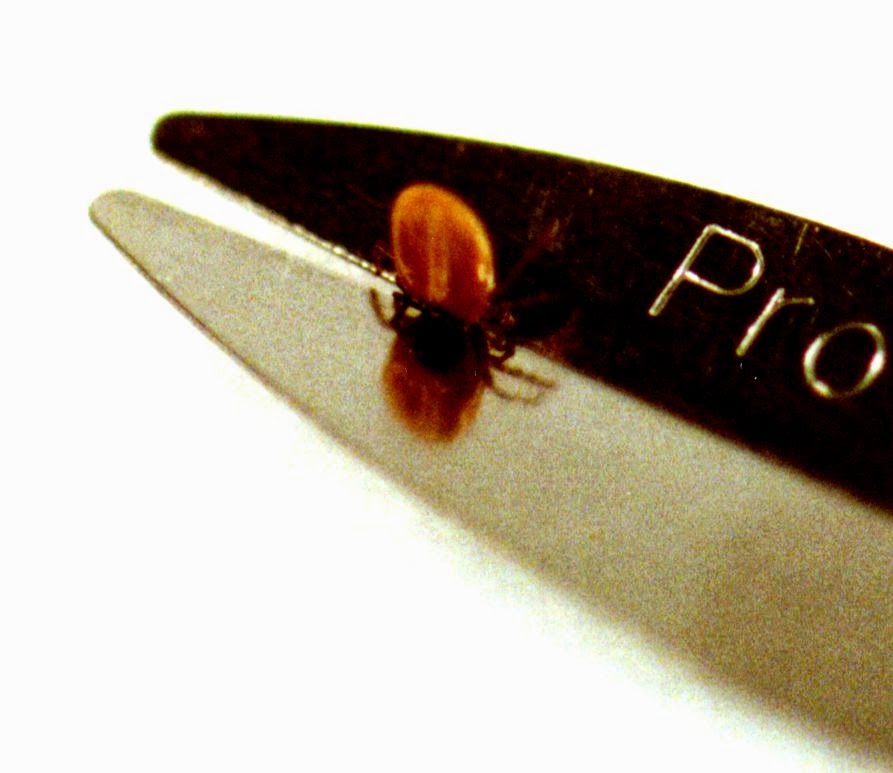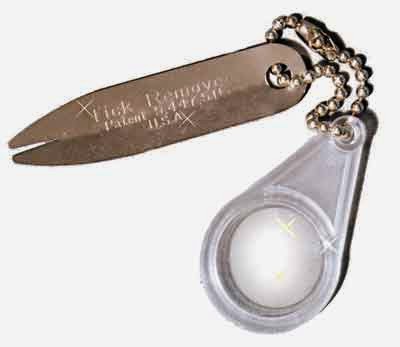Spring is the time of year when adult ticks that have overwintered underground emerge for one last attempt at a succulent blood feast. If you find one attached to yourself or your pet, I highly recommend using the Pro-Tick Remedy to remove the nasty little blood-sucker—it’s been my go-to tick removal device for years.
 This ingeniously simple tool features a small, tapered slit on one end. Simply slide it between the body and head of the embedded tick and lift upwards until the tick pops free. It’s much easier to use than tweezers, which require that 1) you have a quality pair allowing you to tightly grip the tick and 2) that you’re able to locate and firmly grab the portion of the tick between the body and head. Plus the nearly flat profile and ultralight weight of the Pro-Tick Remedy makes it possible to carry in your wallet for ready availability.
This ingeniously simple tool features a small, tapered slit on one end. Simply slide it between the body and head of the embedded tick and lift upwards until the tick pops free. It’s much easier to use than tweezers, which require that 1) you have a quality pair allowing you to tightly grip the tick and 2) that you’re able to locate and firmly grab the portion of the tick between the body and head. Plus the nearly flat profile and ultralight weight of the Pro-Tick Remedy makes it possible to carry in your wallet for ready availability.
 The Pro-Tick Remedy comes with a 5X plastic magnifying glass, though it’s seldom necessary (I’ve never used it) and can be readily discarded. For a mere $5, I consider the Pro-Tick Remedy a no-brainer investment (or gift—I’ve given it several times) if you and/or your dog spend any time in the tick-rife woods of the Northeast.
The Pro-Tick Remedy comes with a 5X plastic magnifying glass, though it’s seldom necessary (I’ve never used it) and can be readily discarded. For a mere $5, I consider the Pro-Tick Remedy a no-brainer investment (or gift—I’ve given it several times) if you and/or your dog spend any time in the tick-rife woods of the Northeast.
The device does, however, have one drawback. It is not effective at removing poppy seed-sized nymphs—the slit isn’t narrow enough to firmly grip the near-microscopic dimensions of a nymph’s body. For removing these micro-nasties, the best option remains a pair of quality tweezers (though the Liberty Mountain Tick Key is also reputed to work).
Lastly, keep in mind that the best tick removal device on the planet is worthless if you don’t find the tick in the first place. Always check yourself thoroughly any time after any outing in the Northeast woods.
For more on ticks and Lyme disease, The American Lyme Disease Foundation offers an excellent overview of the deer tick life cycle, as well as a good poster showing the probability of Lyme disease transmission based on how long the tick has been feeding.
Photos: tickinfo.com